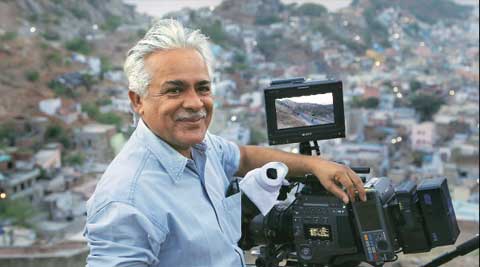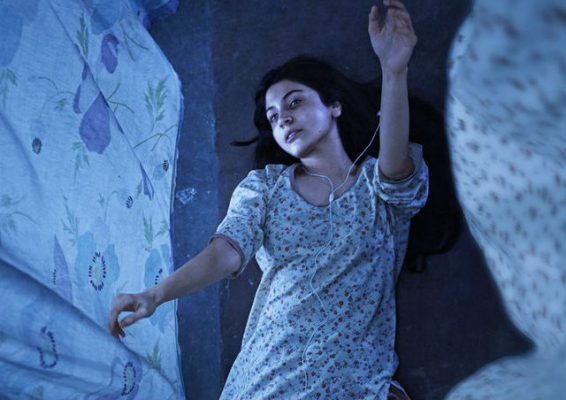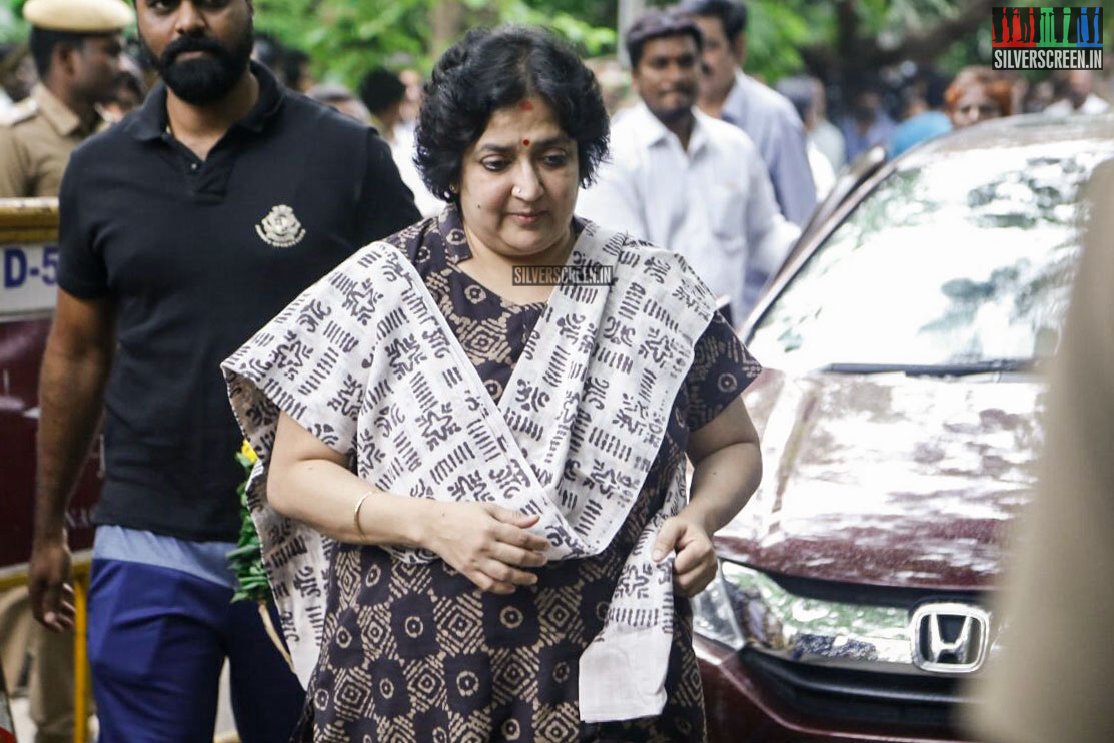Long introductions prefaced cinematographer Anil Mehta’s talk. So long that the first thing Anil Mehta jokingly said was, “I think so much has been said that I’m ready to leave.” This was the second talk in the V.K. Murthy Memorial Lecture series, at the 8th edition of the Bengaluru International Film Festival (BIFFES) 2016. Following the Mani Ratnam talk, but a completely different event. The audience was told to avoid both overly technical questions, and ‘stardust-like’ questions. Gone were the raucous crowds, the electrifying atmosphere of adulation in the audience. It began on a serious note, with tributes paid to the memory of three legendary cinematographers: VK Murty, Haskell Wexler and Vilmos Zsigmond.
An era ends. Moment of silence for two recently departed legends, #HaskellWexler & #VilmosZsigmond. Live from #BIFFES 2016.
— Silverscreen.in (@silverscreenin) January 30, 2016
A D V E R T I S E M E N T
*****
Unlike Mani Ratnam, Anil Mehta came with a prepared speech. His topic was ‘Evolution of realism in Indian cinematography’. He begins by saying that it’s not a good idea to call a cinematographer to give a speech. For a cinematographer, to use words to evoke a sense of his art is actually an inverse of what he does as part of his work. He, in a sense, is the person who soaks in the words and interprets them. For us who behind the scenes it’s difficult to articulate the process we go through. S/he reads a screenplay with words. These evoke images and thoughts on how to achieve them.
“Then he’ll meet the director and hear him out on the local feel of the film. And at this stage, a lot of very fancy words are thrown at him. Real, very real, surreal, ethereal. You try to assimilate them and make sense of the look of the film. But all this while, what’s probably going through the cinematographer’s mind is a list of numbers and processes. ‘Okay, one stop under-exposure, push process, long lenses, 40mm and above, etc.’” The audience laughs as he continues, “This is our terminology. This is what will translate as the look. And these words mean so little to everyone else. But this is his form of articulation and expression, his way of translating words into images. You tell me now, is this the kind of person who should be delivering a lecture for an artist as great as VK Murthy?
“So why did I agree to be here? Primarily, because I can’t say no to Bhaskar sir [the moderator], who is like a senior and a mentor to me.” Both men are graduates of FTII, with fond memories of their formative years. Listening to them interact, you can sense that this relationship has formed over many avid late-night conversations, over the nuances of Dziga Vertov’s and Werner Herzog’s art have, perhaps accompanied by some filter coffee, and cigarettes. Mehta continues, “Actually, also because so little is said about cinematography, in all the critical writing about film in our country. Everyone accepts that cinematography is an art, a complicated craft. But little is said about it. Ironically, we have to make some noise ourselves.” Bhaskar nods immediately. In the introduction, he had pointed out that,
“BIFFES is one of the few festivals in the world to recognise the #cinematographer as a creative artist.” Live from #BIFFES 2016.— Silverscreen.in (@silverscreenin) January 30, 2016
*****
Moving to the subject of realism, Mehta said that realism was a subject we could grapple with for the rest of our lives. Crediting the Subrata Mitra (cinematographer of Satyajit Ray’s The Apu Trilogy) as his biggest influence. Speaking about his interactions with Subrata at FTII, Mehta said, “What struck you about him, for a self-taught professional, was his grasp of the theoretical aspects of cinematography. The workshop with him wouldn’t start with ‘let’s make frames like Pather Panchali‘. It would start with, get your grey cards, go in exposure width, plot the [unclear] curve, determine gamma. It was painstaking, but the foundation was solid. In that sense, Subrata was a classic realist.
“Cinematographer #SubrataMitra reinvented Hollywood lighting in Charulata.” #AnilMehta
— Silverscreen.in (@silverscreenin) January 30, 2016
“In 1964, while watching his film [Charulata] as a student, it summed up the role of a cinematographer for me. It flowed from indoor to outdoor, set to location, seamlessly. You enjoyed the movie without the camera being in the way. It was a subtle, and articulate way of telling….His method there was different from a Hollywood method of using lighting. He was innovating in that Calcutta location.”
The cinematographer is also a co-narrator, with composition, movement, lensing, lighting; those are his language, and his syntax.”
Mehta went to discuss how Ingmar Bergman spent hours in a Church, watching the lights, to ensure that there would be no shadows in Winter Light (1963). A diametrically opposite approach to this, said Mehta, was Guru Dutt’s Kaagaz Ke Phool (1959). With a frame by frame analysis, Mehta argued that there could be no better example of heightened surrealism than in VK Murthy’s work in this film.
*****
“Gordon Willis once said that, ‘A cinematographer is a visual psychiatrist – moving an audience through a movie […] making them think the way you want them to think, painting pictures in the dark.’ Subrata sir and Murthy sir both did the same job, but taking very different paths.
“I feel that there is a Western way and an Oriental way of representation, quite different from each other. The Western aesthetic derives from rationality, causality, linear form. Art and literature reflect this reality. All Western art doesn’t work within the confines of realism, but it does become the reference point. And a point of departure, like Cubism, will self-consciously deploy multiple perspectives as a stated principle of deviation.
Recommended
“The Oriental way is more amorphous, deriving from sensory, using codes which the audience is familiar with. The representative modes are not to be construed as abstractions but as reality.” Contrasting Renaissance painting with its lifelike representation, with Indian miniature paintings, Mehta said both have a high level of sophistication, but the modes of telling were very different.”
With two different approaches (Subrata’s and Murthy’s), Mehta proposed that determining whose approach was more ‘real’ still remains a question. Folk theatre traditions in India and their styles of narration influence mainstream cinema. In that context, he said, ‘Murthy’s work is more resonant with us. It tends to flow more impulsively with its emotional content, and is more in sync with the drama of our movies.”
*****
“The minute you introduce a camera, you change reality. Heisenberg’s principle applies to all cinema.” #AnilMehta #Realism
— Silverscreen.in (@silverscreenin) January 30, 2016
Mehta also discussed another major influence, Dziga Vertov’s Man With A Movie Camera (1929). “His work reflects on cinema as an art, reality as an aesthetic choice,” he said. “He wants to document reality, with no layers or artifice. He wants cinema to have a pure expression, and worked towards developing a syntax in absolute film language.” But, for Mehta, Man With A Movie Camera is far from being a realist film. “It’s a highly interpretative and very individualistic film where all the modes of montage are formulated. All these modes of editing create associations and meaning, which open up interpretations for the viewer. This is a far cry from his stated manifesto of ‘Life caught unawares, life as it is’. In fact, critics said it wasn’t life as it is, but life in a way they didn’t see at all.” Through a detour into quantum mechanics and Heisenberg’s principle, Mehta pointed out that the ‘act of observing a particle, introduces uncertainty into its reality.’ “The moment one places a camera to record reality, you’ve already altered its meaning and opened it up for interpretation. Then how do you locate realism?”
*****
In conversation with the audience, Anil Mehta talked about his best-known work, Lagaan, Hum Dil De Chuke Sanam, Khamoshi and Highway. And while Mani Ratnam had expressed nostalgia for the warmth of analog, there was similarly in their parting words on what’s the future of cinema. Namely, that digital is the way forward, and there’s no looking back.
*****
Image Courtesy: Indian Express



